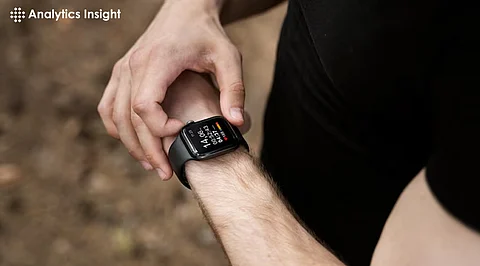

The smartwatch revolution is in full swing, with over 300 million smartwatches expected to be sold worldwide by 2025. As technology continues to shape our daily lives, smartwatches have evolved from simple time-telling devices to powerful fitness trackers and health monitors. Today, these wearable wonders are an essential tool for fitness enthusiasts, offering a wide range of advanced features that make tracking fitness and health easier and more accurate than ever.
One of the most significant features of modern smartwatches is health monitoring. Modern smartwatches come equipped with sensors to track these various metrics, including heart rate, blood oxygen levels (SpO2), electrocardiogram (ECG) capabilities, or even BP. For example, the Fire Bolt Smartwatch has BP monitoring; hence, it is a great option for anyone who wants to maintain their cardiovascular health. Other better smartwatches, such as the Apple Watch Series 10, offer features like sleep apnea detection that would allow users to keep track of their sleep patterns and health conditions better.
Another area where some smartwatches have upgraded is fitness tracking. For instance, the Garmin Forerunner 265 is simply ideal for fitness enthusiasts and continues to feature elaborate and detailed workout tracking, GPS, and performance analytics. This keeps users up on a tab with their workout and provides insight into how they can improve performance. The case still remains as whether running, cycling, or swimming, these smartwatches give the right data, and users can set their personal goals in these exercises to push themselves further.
One of the main concerns of having a smartwatch for fitness is the battery life. The Amazfit GTR 4 has a maximum battery life of two weeks, while the Apple Watch Ultra only allows around two days of use under intensive conditions, including GPS tracking and health monitoring. Features like GPS tracking and health monitoring can drain the battery, so it's important to consider fast-charging capabilities, which many newer models now include.
Durability and water resistance are the must-have features for outdoor sporting people or athletes. Nowadays, many smartwatches employ strong and scratch-resistant materials like titanium or sapphire crystal, ensuring the watch remains intact even with rough usage. Moreover, they are water-resistant, and a few models allow up to 100 meters of water resistance, like the Garmin Instinct 2X Solar, so they become suitable for swimming or water sports.
Another feature that has improved modern smartwatches is connectivity. Most of the latest smartwatches now allow for smooth integration with your smartphone and other devices. For instance, the Samsung Galaxy Watch7 is well-connected, especially for Samsung device users. The Google Pixel Watch 3 offers a larger display size option and fitness tracking with better results, although it has some features exclusive to Pixel phone users. This allows connectivity for users to synchronize data and receive notifications on the go easily.
The coming months will be much more exciting as more features come into smartwatches. Some of the future innovations include a square design from the Samsung Galaxy Watch 8 series, along with blood glucose monitoring and new health sensors. These innovations will give users deeper insights into health and help build a more personalized fitness experience.
Thus, smartwatches have transcended being mere time-keeping devices. It is now an excellent tool that can help athletes track their health, monitor their progress, and stay motivated about their activities. With continued enhancements in health monitoring, fitness tracking, battery life, and toughness, these watches are indispensable pieces of equipment that one should include in their quest for fitness. And as science and technology advance, we can expect smartwatches to become better and more adapted to our specifications.
